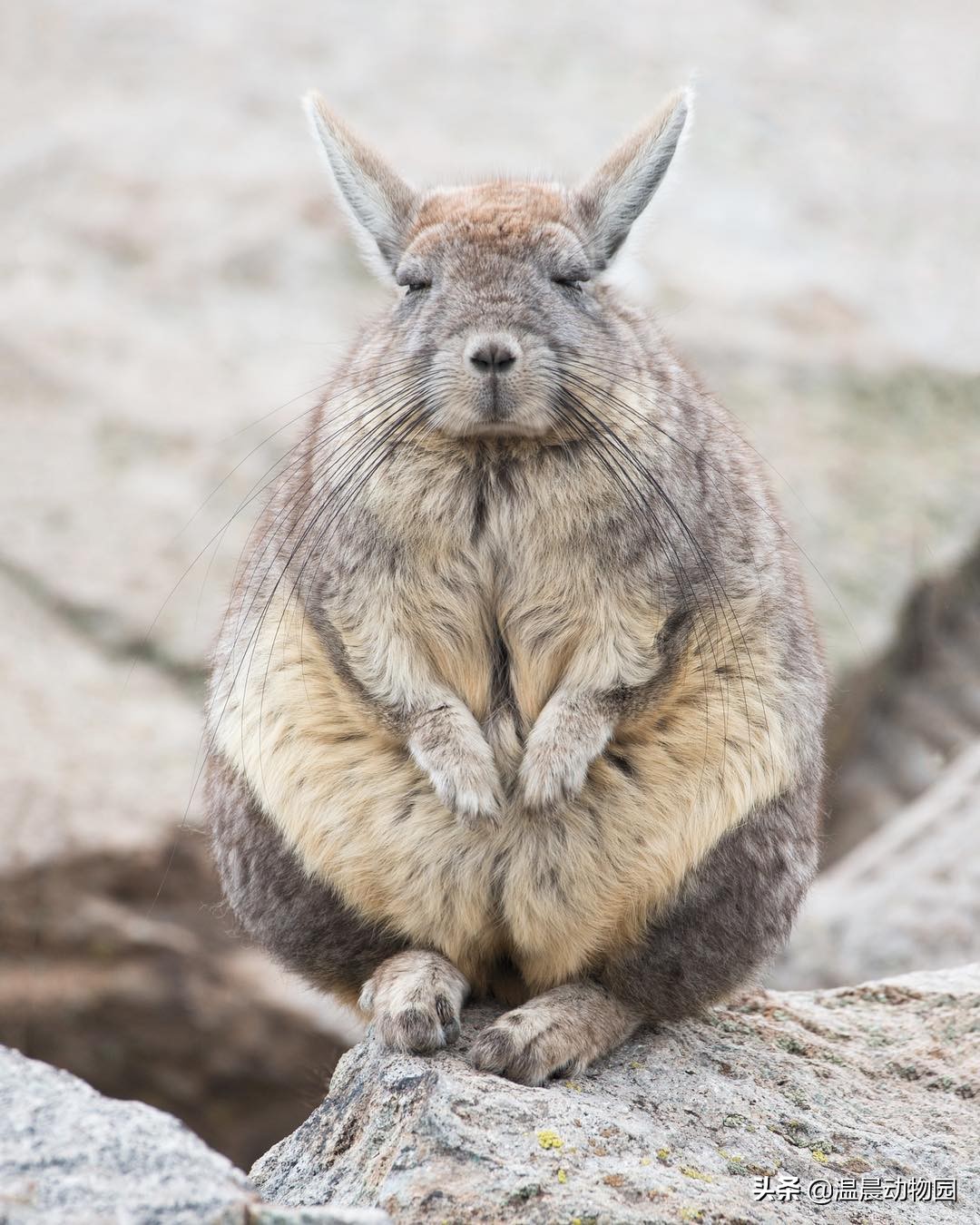Nowadays, in addition to hamsters, guinea pigs, and squirrels, totoro is also a heavyweight player in the pet world of rodents. Their appearance is round and fluffy, and they belong to the fat cuteness of three hundred and sixty degrees without dead angles, although they are quite expensive, but they are indeed very popular.
Totoro is a trade name in the pet world, and its formal biological name is Chinchilla lanigera, also known as the long-tailed silk rat and the South American chinchilla.
Totoro has a pair of big black Kazilan eyes, and it is cute and jumping around, but it has a kind of relative in the wild, and its temperament is very different from that of Totoro, which is two extremes. Let's take a look at what it looks like.

From the appearance, it can be seen that it is indeed very similar to the original color coated totoro. It is called the mountain velvet rat, and belongs to the same family Chinchillidae as the fluffy rat (totoro), except that the chinchilla is the genus Chinchilla, and the mountain velvet rat is the genus Lagidium.
There are four extant species in the genus, namely the southern mountain velvet rat, the northern mountain velvet rat, the Wolfsong mountain velvet rat and the Ecuadorian mountain velvet rat. These four kinds of mountain velvet rats look very similar but each has some nuances, and most of the pictures in this article are southern mountain velvet rats.
Why is it that the temperament of the mountain velvet rat and the totoro is very different? In fact, it is easy to see that Totoro is like a lively teenager, and a pair of big eyes also makes Totoro exude a kind of eccentric cute temperament.
The mountain velvet rat is different, the eyes are not small, but always half squinted or simply closed, the long beard is pulled down obliquely on both sides of the mouth and nose, a pair of small hands have no strength to shrink in front of the chest, looking extremely decadent, moody and angry, the face is full of "what else can I do" look, hanging his head, young and old.
In fact, friends who have raised totoro know that totoro sometimes likes to be in a daze, but at least totoro's eyes are open, and the color of the coat is more vivid and lively, even if the daze is also the kind of stupid cuteness that likes to be stunned.
But the mountain velvet rat feels like a grandfather or grandmother in a daze, sitting under a big tree or under the root of the wall basking in the sun, a pot of tea or a radio next to a small stool, sitting for an afternoon, not going to the heart, emptying yourself of nothing else.
The mountain velvet rat's lifestyle plays an important role in the cultivation of its temperament. They inhabit the rocky mountains of South America at an altitude of 3,000 to 5,000 meters above sea level, and live in natural crevices and narrow caves.
The mountain velvet rat is a herbivorous animal and its habitat is close to the water source, but because the place where it lives is higher, it usually needs to bask in the sun to keep warm. The mountain velvet rat is more active around sunrise in the morning and sunset in the evening, and will drink water and eat during these two times.
So what does a big Tianshan velvet rat do during the day? A: Basking in the sun.
Don't look at the mountain velvet rats as chubby as totoro, but they are actually very agile, very good at jumping and climbing. The mountain velvet rat is particularly good at this, jumping quickly among the undulating rocks in the early morning and dusk in search of moss, lichens, fungi and other foods.
When the temperature rises, the mountain velvet rat is generally not busy, find a rock with more sunlight, squat, first comb the hair to sort out a grooming, and then half squint your eyes, the beard is pulled down, and begin to sunbathe, except for predators (predators such as mountain cats) attack, everything else is ignored.
When the sun goes down at dusk, the mountain velvet rat will eat again, then return to the nest to rest, and the next morning out of the nest again to forage for food, bask in the sun, and cycle back and forth this Buddhist pension-like life.
In terms of social composition, the mountain velvet rat is neither a solitary animal nor a social social animal, but a family unit, about 2-6 individuals form a small community, and the juvenile mountain velvet rat lives such a leisurely life like the adult mountain velvet rat, which is really a teenager and an old man.
One of the biggest differences between the animals of the family Tricaris and other common rodents is that they have a long gestation period, between about 4 and 5 months of pregnancy before giving birth (totoro is about 110 days). The cubs are fully developed in the mother's body, are hairy and open-eyed at birth, and can start eating solid food within 1 day in addition to feeding.
Such a long gestation period and precocious pups can increase the survival rate of their pups. However, due to the early hunting by humans, the number of wild populations has not been very large, such as wild totoro (villi rat) and mountain velvet rat.